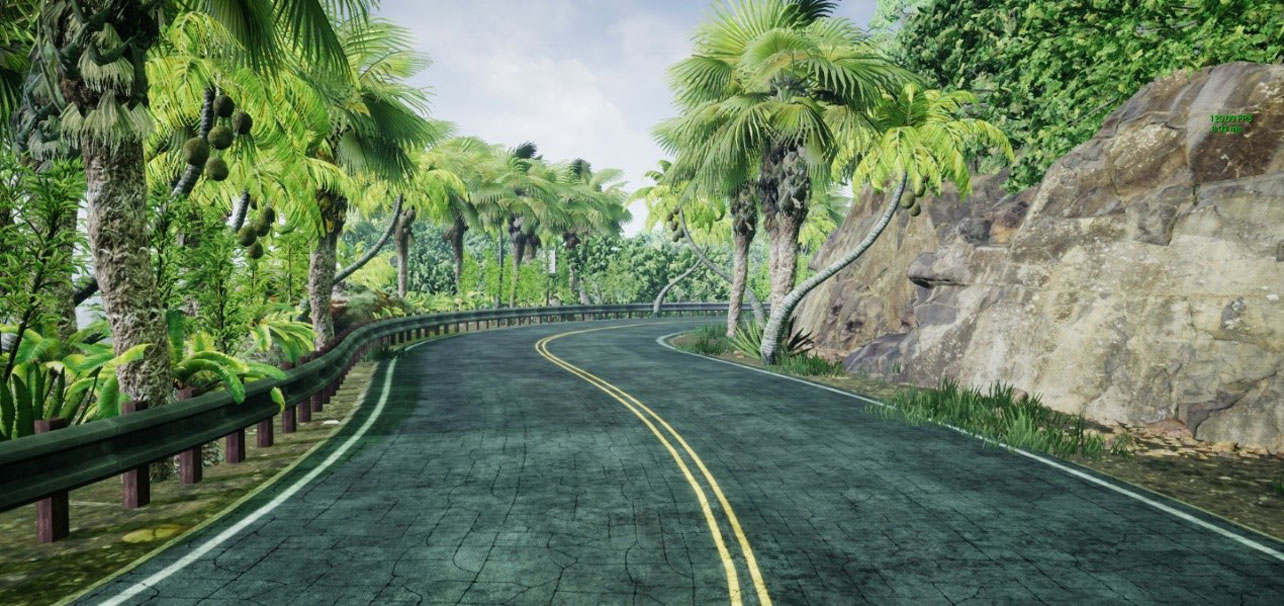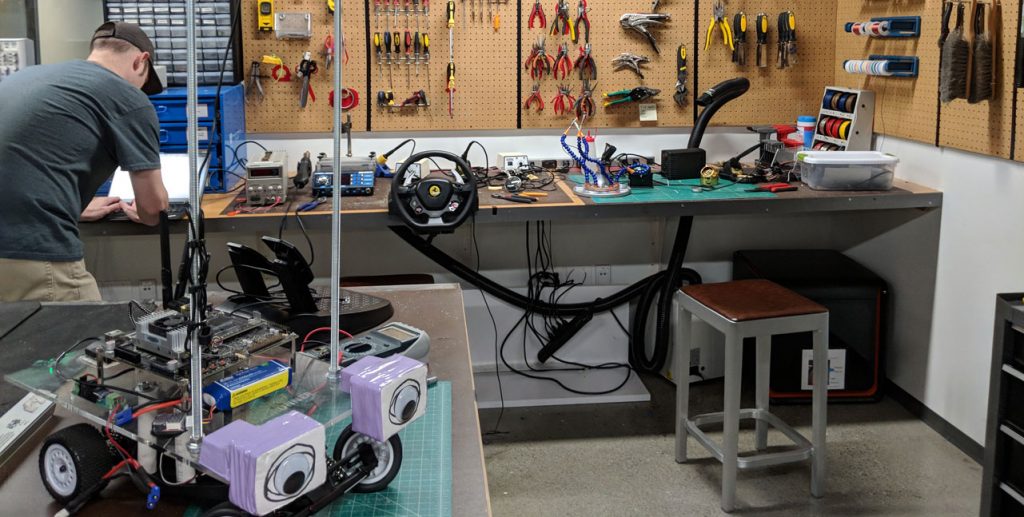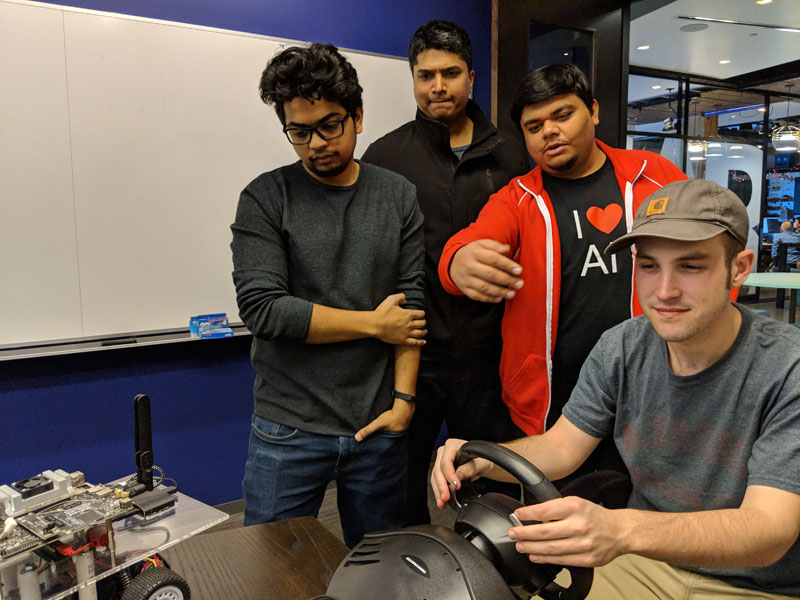
“Cars take up a lot of space in our lives and in our cities. Most of a car’s lifetime is spent sitting around unused, wasting space. Making cars autonomous means more space in our cities, less accidents on the roads and a cleaner and greener environment. Also, I hate driving.” Aditya Sharma is the lead program manager of Project Road Runner at the Microsoft Garage in Redmond, Washington. He’s quite familiar with the challenges around making self-driving cars a reality. A large part is determining autonomous vehicle safety.
Without an actual operator in the vehicle, the game changes dramatically. Without history or precedence, how can a standard for safety be defined for autonomous driving vehicles? Compiling enough data to have statistical significance and demonstrate reliability would require fleets of autonomous vehicles to drive hundreds of billions of miles, a seemingly impossible task.
Project Road Runner hopes to make that task more manageable and accessible to the autonomous driving industry, developers, and researchers, by gathering data and training AI through real-world simulation. Simulation provides a means to collect extensive amounts of data to train models as well as a safe environment to crash-test those models and improve them.
The project started in January 2017 when an email about a study group meeting for an online course on the topic of self-driving cars accidentally ended up in the inboxes of members of the deep learning and robotics community at Microsoft, which Sharma leads. Project Road Runner was one of the projects born through the discussions that followed, with Sharma taking on the role of the lead program manager, Mitchell Spryn taking on a lead engineering role, and Madhur Shrimal, Dhawal Parkar and Matthew Chan rounding up the core team, all bringing in skills ranging from robotics, deep learning and hardware engineering to cloud computing and DevOps. Apart from the core team the project also had several other people, including interns, joining for short periods of time because of its open-door policy. The project has always been open to everyone at Microsoft and people can volunteer as much time as they wish to contribute.
“We’re a small team and much like a startup, people have to wear different hats. Our passion and faith in our vision keeps driving us, which is why we don’t mind putting in the amount of work and hours that go into it outside our day jobs, and that’s the reason behind our success. We don’t treat this like a side project. I’m really grateful to be part of such an awesome team.”
Being a side hustle with no funds to buy an actual car, the first step in their journey was hacking into an RC car to add self-driving capabilities to it. RC cars however, are too small, fast, and fragile for practical experiments on actual roads, so the team switched to working with simulations to develop their autonomous driving algorithms. They soon realized that the simulators freely available on the internet were not going to meet their needs.
The team started looking at alternatives and found a great potential solution at Microsoft Research in AirSim, an open-source simulation platform for drone research. The photo-realism of the environments in AirSim, built using the Unreal Engine, was ideal for training autonomous driving algorithms and would allow far more accurate data capture applicable to real world scenarios. It made perfect sense for Project Road Runner to collaborate with the AirSim team, which resulted in the autonomous driving expansion of AirSim announced in November 2017. Not only did this move helped both the Road Runner and AirSim teams further their research efforts, it also opened the doors to people outside of Microsoft to learn, collaborate and innovate.

Keeping that spirit of learning and collaboration in mind, Project Road Runner recently announced the release of the Autonomous Driving Cookbook, an open-source initiative that provides tutorials, quick starts, and deep dives for all levels of researchers and enthusiasts interested in autonomous driving, from absolute beginners to industry experts. Intended as an ever-evolving source of knowledge and information, Sharma hopes the cookbook will encourage more people to get involved with autonomous driving by reducing the barrier to entry through easy to follow tutorials.
“It’s no longer just a hobby project that we started for fun, it’s having real impact out there in the world. We have always had an open-door policy for all employees at Microsoft, we are just extending that to everyone on the planet. This industry requires a lot of smart people coming together to have a lasting impact and we want to do anything we can to enable that. With the cookbook, you can start training your autonomous driving algorithms over a weekend, and I think that’s just insanely awesome!”
With an endless list of ideas to explore, as volunteers working outside their day jobs, the team members carefully prioritize their investments to ensure they are addressing areas with maximum impact. They recently published the distributed deep reinforcement learning module to the cookbook, which they are hoping would open new doors for autonomous driving research and implementation.
“This is pretty big. With reinforcement learning, you eliminate the need for collecting and storing petabytes of data every week. You can let your car crash into things and learn on its own. Reinforcement Learning has a lot of potential in the AD space, and of course it is impossible to do it in the real world, which is just another reason why I think simulation is going to be the backbone of the AD industry going forward. With our latest tutorial, you can start doing this at scale by distributing the learning job across multiple VMs on the cloud.”

The Road Runner team has also been actively involved in Microsoft’s collaborative efforts in the AD space with external partners, an example of which is the OpenADx initiative with Bosch. The initiative involves several other key players like Mathworks, Red Hat and the Eclipse Foundation, all coming together to bring transparency and better integration capabilities into the highly heterogeneous autonomous driving tool space. The Road Runner team flew out to the Bosch Connected World conference in Berlin to help with this announcement in February.
“People are realizing that succeeding in the AD space means working together. These are exciting times!”
Get AirSim and start playing in your own self-driving car simulation, even drop in custom environments. Explore the Autonomous Driving Cookbook for tutorials to quickly get started with autonomous driving from scratch.
Connect with the project team on LinkedIn: Aditya Sharma, Mitchell Spryn, Madhur Shrimal, Dhawal Parkar, Matthew Chan
Related links:
Now on GitHub: The Autonomous Driving Cookbook from Microsoft
Microsoft extends AirSim to include autonomous car research
